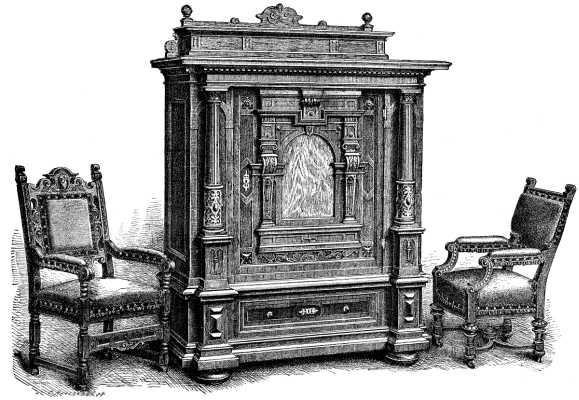Scientific American Supplement, No. 392, July 7, 1883 by Various, is part of the HackerNoon Books Series. You can jump to any chapter in this book here. PREVENTING IRON FROM RUSTING.
PREVENTING IRON FROM RUSTING.
In the present state of civilization the use of iron has reached a very wide extension, and in a great number of cases iron is used where wood or stone was formerly used. It is certainly an important question how this metal can be protected under all circumstances against rust or oxidation, so that the many costly iron structures may retain their usefulness and strength, and be handed down uninjured to posterity.
Wherever bright iron comes into contact with air and moisture it immediately begins to rust, and this rust is not content to continually rob it of its substance in its persistent progress by scaling off the surface, but at the same time it injures the remainder of the iron by making it brittle. Attempts have hitherto been made to protect the iron by covering it with other and less easily oxidizable metals. For this purpose tin was first selected, then lead and zinc, and recently nickel. Furthermore, earthy glazings and enamels, such as are used on stone ware, have been applied to iron vessels, and they have already found extensive use in the household. In most cases these coatings, either metallic or vitreous, are inapplicable, either because they cannot be applied or are too expensive, so that on a large scale recourse must be had to paints made by mixing oils with metallic oxides, earths, etc., for protecting the surface of the iron from air and moisture.
It has been observed that iron does not rust in dry air, not even in dry oxygen. In like manner it frequently happens that unpainted iron, such as weather vanes, fences, etc., is exposed to the air for a century with very little injury, being covered with a thin coating of the magnetic oxide (proto-sesquioxide), which acts as a protection and prevents farther action. Hence it has been proposed to produce a layer of this magnetic oxide on the surface artificially, and it was found that superheated steam furnished the means for doing this. But it is not to be supposed that such a process would find use on a large scale, and besides this protection could only serve for iron tolerably exposed to the open air and not for that in direct contact with carbonic acid and water.
An interesting observation has been made on railways that the iron rails, ties, bolts, etc., rust until the road begins to be used. Here we must assume that anything made of iron is more inclined to rust when at rest than if occasionally caused to vibrate, when an electrical action probably comes into play and decreases the affinity of iron for oxygen.
In tearing down old masonry iron bonds and clamps are often found which are as free from rust, so far as they are covered with mortar, as they were the day they left the blacksmith's hands. A French engineer met with such a phenomenon when he uncovered the anchor plates of several chain bridges which had been built about thirty years. Where the anchors were covered with the fatty lime mortar of the masonry they showed no traces of rust, but the prolongations of the anchors in empty spaces were rusted to such an extent that they were only one-third of their original thickness.
It has been repeatedly observed that iron does not rust in water in which are dissolved small quantities of caustic alkalies or alkaline earths, which neutralize every trace of acid. It seems that these experiences are the basis of A. Riegelmann's (Hanau) new protection against rust. The paint that he uses contains caustic alkaline earths (baryta, strontia, etc.), so that the iron is in a condition similar to the iron anchors of the chain bridges that were embedded in lime mortar. Although a paint is not thick enough to inclose so much alkali as the masonry did that the iron was embedded in, nevertheless the alkaline action will make itself felt as long as the coating has a certain consistence. Under all circumstances, however, these new paints will be free from active acids, which is more than can be said of our iron paints hitherto in use. Besides this, the rust protector has such a composition that it could serve its intended purpose without the addition of any alkali. If experience confirms this claim, it will be an interesting step forward in the preservation of iron, and contribute to an extension in the use of iron.--Polytechn. Notizblatt.

About HackerNoon Book Series: We bring you the most important technical, scientific, and insightful public domain books.
This book is part of the public domain. Various (2005). Scientific American Supplement, No. 392, July 7, 1883. Urbana, Illinois: Project Gutenberg. Retrieved https://www.gutenberg.org/cache/epub/8742/pg8742-images.html
This eBook is for the use of anyone anywhere at no cost and with almost no restrictions whatsoever. You may copy it, give it away or re-use it under the terms of the Project Gutenberg License included with this eBook or online at www.gutenberg.org, located at https://www.gutenberg.org/policy/license.html.

